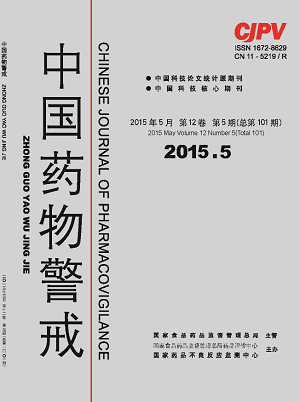|
|
Study on Correlation of the Content of Periplocin with Acute Toxicity of Cortex Periploce
XU Xin ,MA Zhi-hui ,SUN Da ,CHEN Jin-tang ,ZHOU Kun ,LIU Yang
2015, 12(5):
261-263.
Objective To study the correlation of the content of periplocin with acute toxicity of in different places. Methods The content determination of periplocin and 4-methoxy salicylic aldehyde in Cortex Periploce was carried out by HPLC simultaneously. Mice were respectively orally administered with 32g·kg-1 of Cortex Periploce extract, 4-methoxy salicylic aldehyde 200, 250, 300 mg·kg-1, the toxic symptoms and the number of deaths were observed for fourteen days Results The acute toxicity study showed that the mortality in the groups of Cortex Periploce 125.7 g crude drug/kg(containing periplocin 159.552 mg·kg-1), 106.6g crude drug/kg (Containing Periplocin 112.032 mg·kg-1), 111.7g crude drug/kg (containing periplocin 91.584 mg·kg-1), 123.8g crude drug/kg (containing periplocin 93.794 mg·kg-1), 106.6 g crude drug/kg (containing periplocin 46.784 mg·kg-1), 122.6 g crude drug/kg (containing periplocin 98.976 mg·kg-1) were 70%, 20%,0,0,0 and 20% respectively. Linear regression correlation analysis showed that the correlation coefficient was 0.9678. The mortality in the group of 4-methoxy salicylic aldehyde 300 mg·kg-1 was 0 Conclusion There was good correlation between the content of periplocin and the results of the acute toxicity of Cortex Periploce , the toxicity response can be reduced by limiting the content of periplocin.
References |
Related Articles |
Metrics
|
